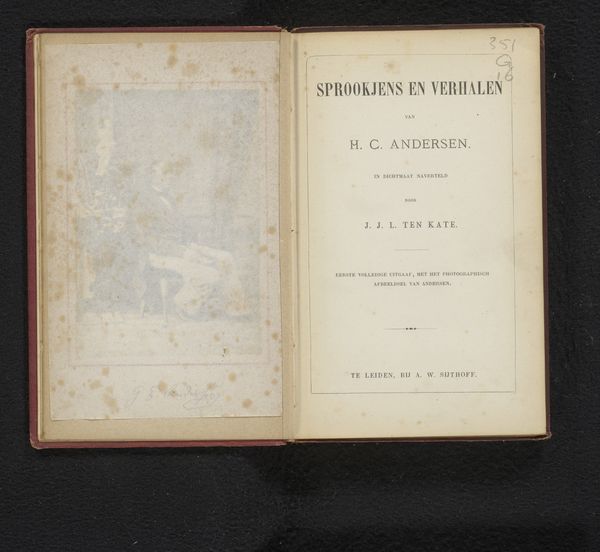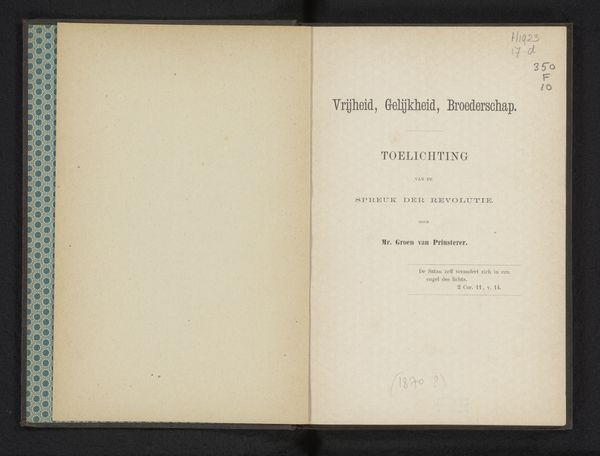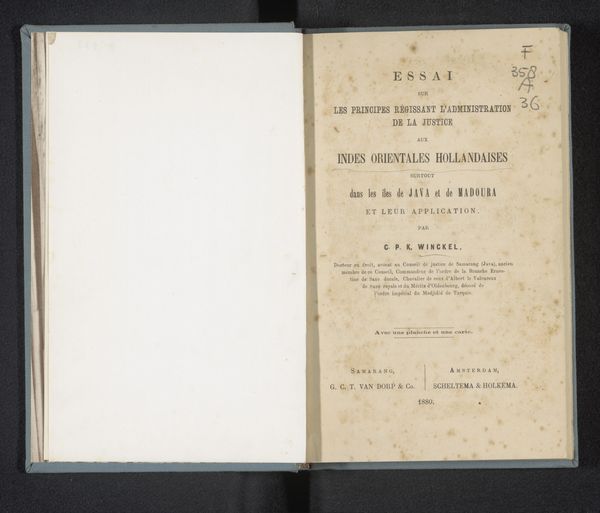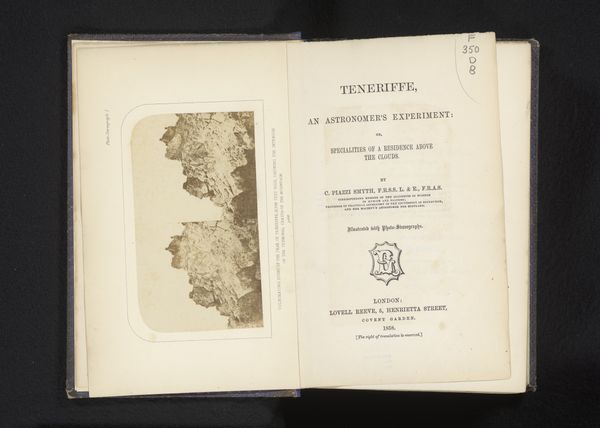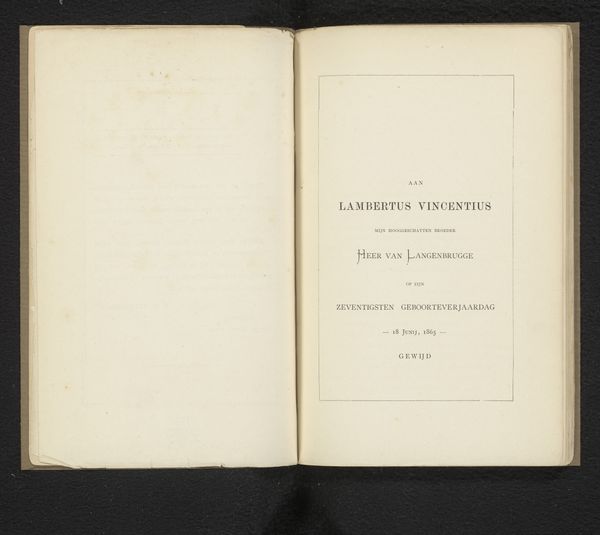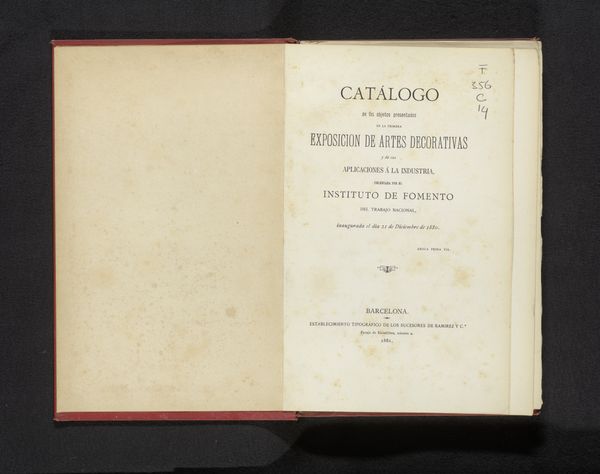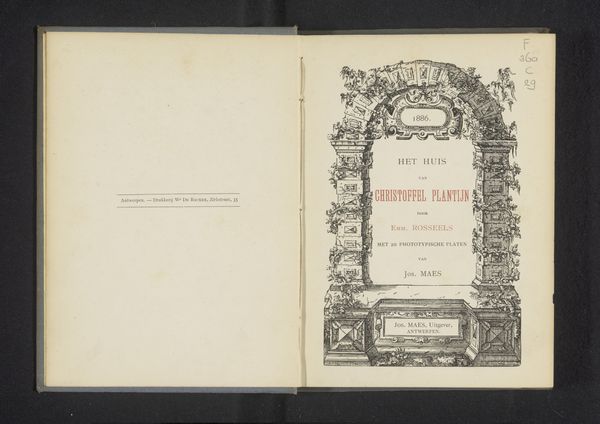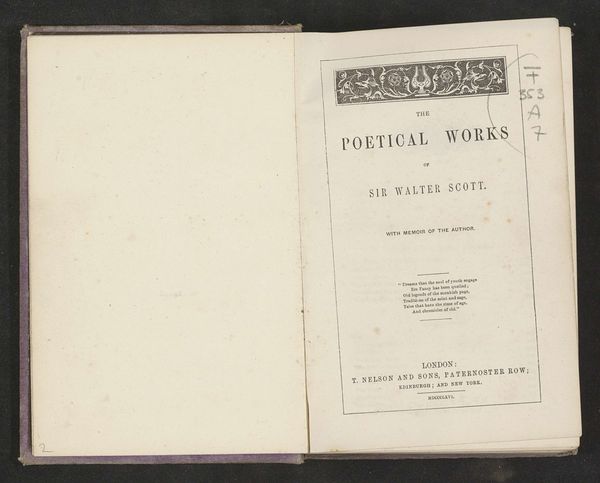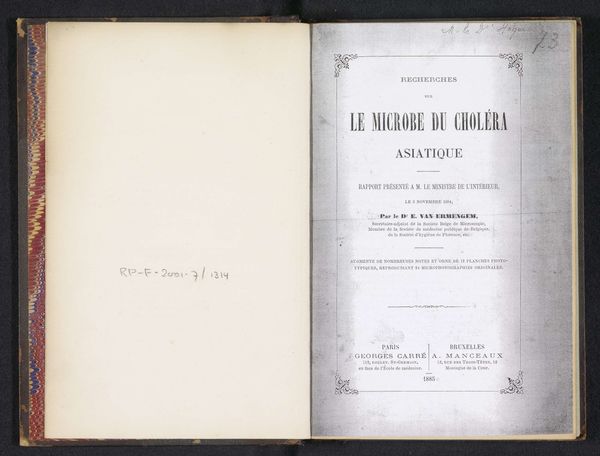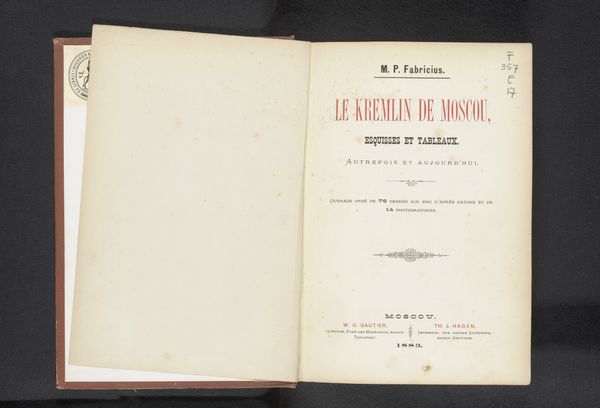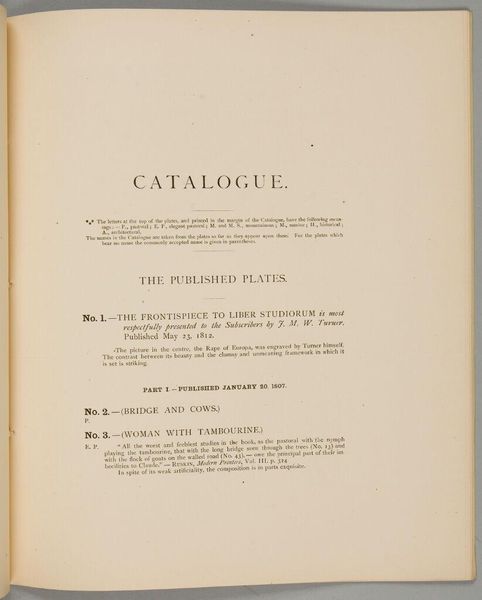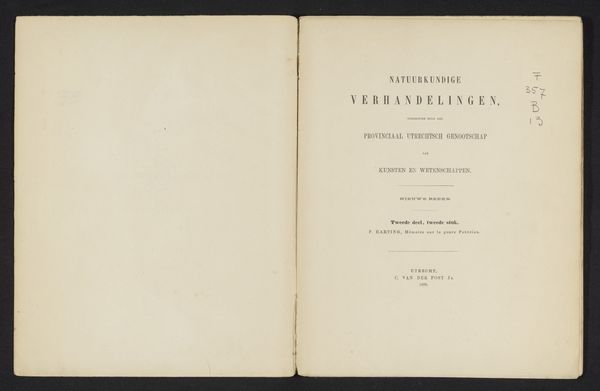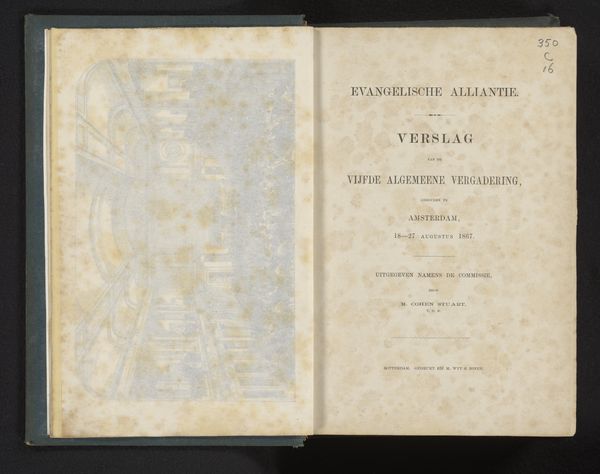
Catalogue de la collection de tableaux anciens de E. Rothpletz à la vieille tour d'Aarau 1866
0:00
0:00
print, typography
#
script typeface
#
aged paper
#
script typography
# print
#
hand drawn type
#
personal journal design
#
personal sketchbook
#
typography
#
hand-drawn typeface
#
thick font
#
delicate typography
#
historical font
Dimensions: height 233 mm, width 160 mm, thickness 10 mm
Copyright: Rijks Museum: Open Domain
Curator: Let’s discuss this page from an antique catalog. Entitled "Catalogue de la collection de tableaux anciens de E. Rothpletz à la vieille tour d'Aarau," it dates back to 1866 and originates from H.R. Sauerländer. Editor: Immediately, the typography catches my eye. It feels incredibly curated. It’s both simple and incredibly intentional. There's an interesting balance between utility and a desire for ornamentation through the bordering florals and contrasting letter weights. Curator: Precisely. The catalogue itself serves not just as a list but as a cultural artifact, shaping our understanding of what was valued in the mid-19th century. Think about the act of compiling and disseminating knowledge. It represents a certain cultural capital. Who got to decide which collections merited such attention? Editor: That's key. And it begs the question: Who was E. Rothpletz and why were their 'tableaux anciens' significant enough to warrant this kind of formalized record? I imagine these decisions played into broader issues of access, privilege, and taste within that historical moment. Curator: Absolutely. Examining the typography—the deliberate choices in font, layout, and even the printer’s details—gives insight into the bookmaking and art collecting spheres of Aarau at that time. It served as both a record of possession and a way to propagate ideas about taste. Editor: To me, that floral border speaks volumes about the artifice inherent in how collections and "good taste" get produced and promoted. Today we often think about transparency and accessibility; then, cataloging may have reinforced elitism. Curator: Indeed, its presence underscores the curatorial efforts involved. It points toward the social role of art at the time and even offers a lens through which we may examine questions of privilege within similar structures even today. Editor: Examining the catalogue in this way helps reveal the power dynamics inherent in how collections were formed and how access was (or wasn’t) granted. A printed object is never neutral. Curator: Precisely, thinking about this document is a vivid example of art as deeply entangled in social, cultural, and political forces. Editor: A seemingly straightforward catalog becomes a rich entry point for questioning narratives and highlighting how value systems persist through documentation and design.
Comments
No comments
Be the first to comment and join the conversation on the ultimate creative platform.
